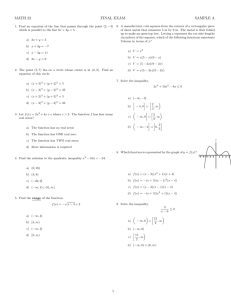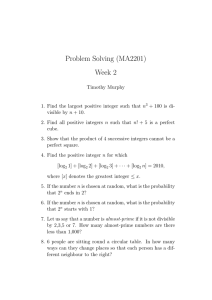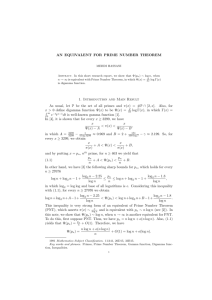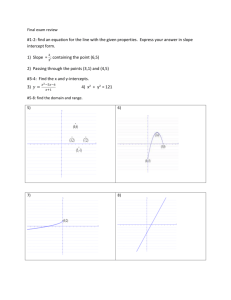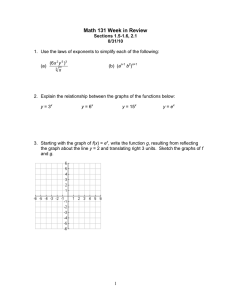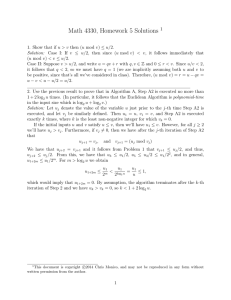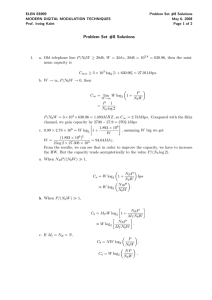Document 10677404
advertisement
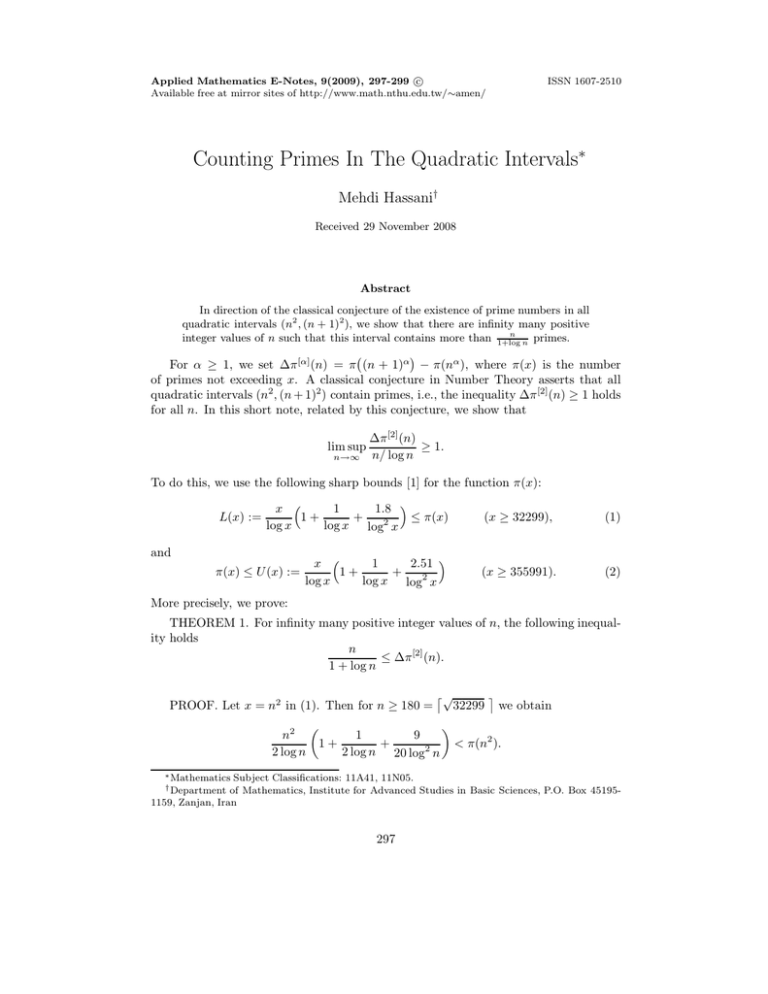
c Applied Mathematics E-Notes, 9(2009), 297-299 Available free at mirror sites of http://www.math.nthu.edu.tw/∼amen/ ISSN 1607-2510 Counting Primes In The Quadratic Intervals∗ Mehdi Hassani† Received 29 November 2008 Abstract In direction of the classical conjecture of the existence of prime numbers in all quadratic intervals (n2 , (n + 1)2 ), we show that there are infinity many positive n primes. integer values of n such that this interval contains more than 1+log n For α ≥ 1, we set ∆π [α] (n) = π (n + 1)α − π(nα ), where π(x) is the number of primes not exceeding x. A classical conjecture in Number Theory asserts that all quadratic intervals (n2 , (n + 1)2 ) contain primes, i.e., the inequality ∆π [2] (n) ≥ 1 holds for all n. In this short note, related by this conjecture, we show that lim sup n→∞ ∆π [2] (n) ≥ 1. n/ log n To do this, we use the following sharp bounds [1] for the function π(x): L(x) := 1 1.8 x ≤ π(x) 1+ + log x log x log2 x and π(x) ≤ U (x) := More precisely, we prove: x 1 2.51 1+ + log x log x log2 x (x ≥ 32299), (1) (x ≥ 355991). (2) THEOREM 1. For infinity many positive integer values of n, the following inequality holds n ≤ ∆π [2] (n). 1 + log n PROOF. Let x = n2 in (1). Then for n ≥ 180 = n2 2 log n 1+ √ 32299 we obtain 1 9 + 2 log n 20 log2 n ∗ Mathematics < π(n2 ). Subject Classifications: 11A41, 11N05. of Mathematics, Institute for Advanced Studies in Basic Sciences, P.O. Box 451951159, Zanjan, Iran † Department 297 298 Counting Primes in the Quadratic Intervals Also, it is clear that for every n ≥ 2, we have n−1 X log2 k 9 n2 n2 +4− − < 2 log n log 9 log log k 2 log n k=3 1+ 1 9 + 2 log n 20 log2 n . We combine these two inequalities to get the following inequality n−1 X log2 k n2 9 +4− − < π(n2 ) 2 log n log 9 log log k k=3 (n ≥ 180), and we rewrite this as follows 1 2 n2 32 − log n log 3 − n−1 X k=3 log2 k < π(n2 ) − π(32 ). log log k This inequality yields that n−1 X k=3 1 2 (k + 1)2 k2 − log(k + 1) log k log2 k − log log k < n−1 X k=3 π (k + 1)2 − π(k 2 ) (n ≥ 180). Now, we note that terms under summations on both sides, are non-negative integers, and this asserts that the inequality 1 (n + 1)2 n2 log2 n − − ≤ π (n + 1)2 − π(n2 ), 2 log(n + 1) log n log log n holds for infinity many positive integer values of n. Since for n ≥ 7413 the left hand n side of the last inequality is greater than 1+log , we obtain the result. This completes n the proof. NOTE 1. The following stronger version of the above result has been checked by computer for 3 ≤ n ≤ 10000: log2 n 1 (n + 1)2 n2 − − 1 < ∆π [2] (n) − − < log2 n log log n. log log n 2 log(n + 1) log n This may hold for all values of n, “this is a conjecture”. NOTE 2. Let g(n) = # t | t ∈ N, t ≤ n, t2 , (t + 1)2 contains a prime . Clearly, limn→∞ g(n) = ∞ and g(n) ≤ n. A lower bound for g(n) is g(n) ≥ M (n), where ( n ) n X 1 X (k + 1)2 k2 log2 k 2 2 M (n) = max − − ≤ U (k + 1) − L(k ) . m 2 log(k + 1) log k log log k k=597 k=m M. Hassani 299 This holds for every n ≥ 597, and obtained by considering Theorem 1. As n → ∞, we have M (n) = O(n). Finally, we guess that for every > 0 there exists n ∈ N such that for all n > n we have M (n) > (1 − )n. NOTE 3. We endnthis note by introducing a question. oWhat is the value of the following quantity inf α : ∆π [α] (n) ≥ 1 holds for all n ∈ N ? Acknowledgment. I express my thanks to Ejkova Ekaterina (Katya) for her useful comments on the English writing of this note. References [1] P. Dusart, Inégalités explicites pour ψ(X), θ(X), π(X) et les nombres premiers, C. R. Math. Acad. Sci. Soc. R. Can., 21(2)(1999), 53–59.

